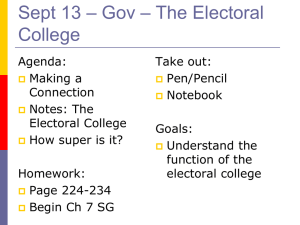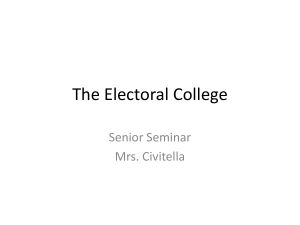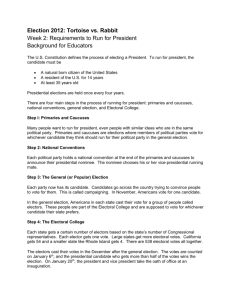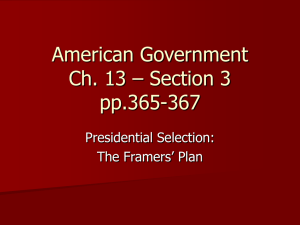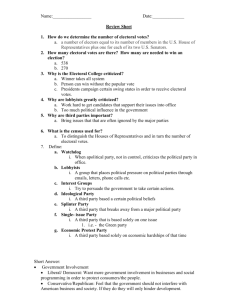Written by Ken Rutledge With all of the hullabaloo and the media
advertisement
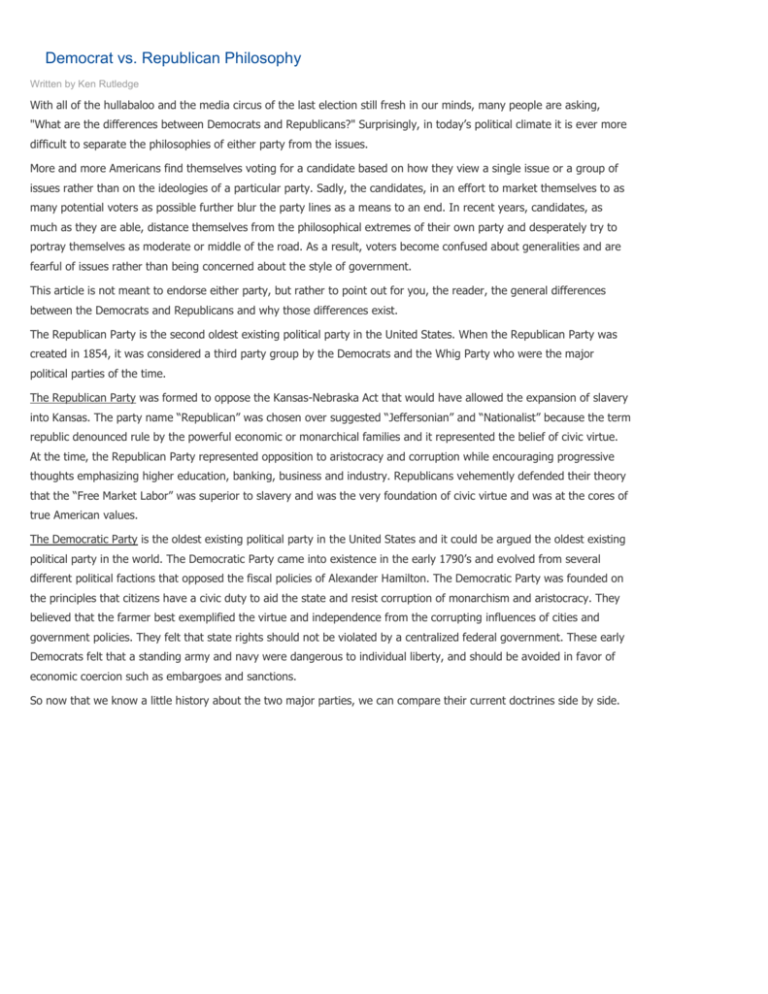
Democrat vs. Republican Philosophy Written by Ken Rutledge With all of the hullabaloo and the media circus of the last election still fresh in our minds, many people are asking, "What are the differences between Democrats and Republicans?" Surprisingly, in today’s political climate it is ever more difficult to separate the philosophies of either party from the issues. More and more Americans find themselves voting for a candidate based on how they view a single issue or a group of issues rather than on the ideologies of a particular party. Sadly, the candidates, in an effort to market themselves to as many potential voters as possible further blur the party lines as a means to an end. In recent years, candidates, as much as they are able, distance themselves from the philosophical extremes of their own party and desperately try to portray themselves as moderate or middle of the road. As a result, voters become confused about generalities and are fearful of issues rather than being concerned about the style of government. This article is not meant to endorse either party, but rather to point out for you, the reader, the general differences between the Democrats and Republicans and why those differences exist. The Republican Party is the second oldest existing political party in the United States. When the Republican Party was created in 1854, it was considered a third party group by the Democrats and the Whig Party who were the major political parties of the time. The Republican Party was formed to oppose the Kansas-Nebraska Act that would have allowed the expansion of slavery into Kansas. The party name “Republican” was chosen over suggested “Jeffersonian” and “Nationalist” because the term republic denounced rule by the powerful economic or monarchical families and it represented the belief of civic virtue. At the time, the Republican Party represented opposition to aristocracy and corruption while encouraging progressive thoughts emphasizing higher education, banking, business and industry. Republicans vehemently defended their theory that the “Free Market Labor” was superior to slavery and was the very foundation of civic virtue and was at the cores of true American values. The Democratic Party is the oldest existing political party in the United States and it could be argued the oldest existing political party in the world. The Democratic Party came into existence in the early 1790’s and evolved from several different political factions that opposed the fiscal policies of Alexander Hamilton. The Democratic Party was founded on the principles that citizens have a civic duty to aid the state and resist corruption of monarchism and aristocracy. They believed that the farmer best exemplified the virtue and independence from the corrupting influences of cities and government policies. They felt that state rights should not be violated by a centralized federal government. These early Democrats felt that a standing army and navy were dangerous to individual liberty, and should be avoided in favor of economic coercion such as embargoes and sanctions. So now that we know a little history about the two major parties, we can compare their current doctrines side by side. Republicans Democrats Generally believe it is the responsibility Generally believe that it is the government's of citizens to run the government. responsibility to care for the citizens. Believe in free market and strong international Believe in structured, regulated markets alliances. and minimal external entanglements. Believe in the right to bear arms. Believe in strong gun control. Favor the death penalty. Oppose the death penalty. Believes abortion is wrong. Believes in a woman’s right to choose. Believe that people determine their own destiny Believe that people should share economic and do not support welfare programs. burdens and generally support welfare Believe in separation of church and state, but programs for aid to the poor. some on the far right feel it is ok to pray in schools. Believe in separation of church and state. It is important to note that especially in the most recent election, Independent voters, those who are not affiliated with either party were a much sought after commodity by both candidates. Independent voters traditionally don’t want to vote for either of the major party candidates because they feel that both parties are defined by their most extreme factions and that that the core philosophies are basically the same for both parties. As for the Democrats, Independents view them as the far left liberals whose every maneuver is bent on political correctness, careful to never offend anyone, and the perception of failed socialist policies. The Republicans on the other hand are viewed as dominated by far-right conservatives who are determined to maintain and preserve, at any cost, the existing antiquated institutions under the guise of protecting traditional values. Political Philosophy Quesstions often arise as to what is a liberal? What is a conservative? What does it mean to support the Left? Or the Right? What does a certain political party stand for? Although positions change over time and it's never good to make generalizations about what a certain group thinks, this section tries to clarifies some of the basic ideological definitions. Politicians have a wide range of opinions; thus, any particular leader doesn't necessary fit neatly into these categories. The original definition of a liberal was someone who advocated change, new philosophies, and new ideas. A conservative was someone who avoided change, instead preferring to stick to the tried and true. In modern times, these definitions have expanded to include a wide set of political beliefs (which are defined below). To be Leftist or agree with the Left political point of view is synonymous with being liberal. To be Rightist or agree with the Right political point of view is synonymous with being conservative. The Left and Right terms were created because political ideology is viewed on a continuum; most people generally hold views somewhere in the middle. For example, if you agree more with liberal ideas, you're considered more Leftist in your thinking. The graphic below illustrates the continuum: Liberal (Left) Conservative (Right) Generally speaking, the Democratic party follows a more liberal platform; the Republican party follows a more conservative platform. The following table summarizes the current ideology of the parties Liberal (i.e. Left) Conservative (i.e. Right) Representative Party Democrats Republicans Abortion Pro-choice Pro-life Affirmative Action For (i.e. maintain race-based preferences) Against (i.e. ban race-based preferences) ANWR Drilling Prevent the Alaska drilling Pursue this and other domestic oil sources Balanced Budget Amendment Opposed In Favor of Business Increase regulation and worker protection Ease regulation and keep government out of business Crime Protect the rights of the accused first and foremost Provide maximum punishment and protect the rights of the victim first and foremost Death Penalty Ban Maintain Defense Spending Decrease or maintain Increase Embryonic Stem Cell Research Use federal funding for the research Don't use federal funding for the research Government Size Increase the government and use more socialistic policies Reduce the government and use more capitalistic, free-market policies Gun Control Ban all gun ownership by civilians, especially handguns and assault rifles Protect gun ownership Health Care Make 100 percent government controlled De-regulate and introduce free market reform Immigration Grant amnesty to illegal aliens; don't build a fence along the Mexican border; allow illegal aliens to obtain driver's licenses; prevent the creation of a national ID card & database to track people in the country. Prevent amnesty for illegal & driver's licenses for illegal aliens; construct a Mexican border fence; create a national ID card & database to track people in the country. Increase or maintain legal immigration only. Sign this environmental treaty Don't sign this environmental treaty Kyoto Treaty Malpractice Lawsuits Do not cap punitive & pain/suffering damage amounts Cap punitive & pain/suffering damage amounts Mexican Border Fence Do not build the fence Build the fence Minimum Wage Increase Lower or eliminate altogether Missile Defense Scrap this program Pursue this program Personal Responsibility Government needs to protect people from themselves People should be responsible and be held accountable for their own actions PhysicianAssisted Suicide Allow Prevent Religion Maintain separation of church and state; prevent faith-based government initiatives Introduce more religion in schools; allow faithbased government initiatives Same-Sex Marriage Legalize Ban School Vouchers End the program Expand the program Social Security Increase age of beginning eligibility (e.g. 68 or 70); increase salary limits subject to tax Privatize; i.e. allow citizens control over their own money and allow stock investments Social Spending Increase Decrease or maintain Taxes Increase taxes, especially on the rich Cut taxes, especially on businesses that invest and hire Three Strikes Law Overturn this law Maintain and expand these laws Unions Workers should be unionized wherever possible, even if it means mandatory joining of a union to work at a place Unionization should be limited, and workers should never be forced to join World Peace Negotiate first and only take military action if sanctioned by the U.N. and other world organizations Work with world bodies and use negotiation, but take unilateral pre-emptive action if necessary to protect America What Is The Electoral College Written by Ken Rutledge Most people cringe when they hear something about the electoral college. Until the 2000 election, the electoral college was such an abstract term that most Americans did not really know what it was, how it was made up, or who might be in it! Suddenly, after the 2000 election of George W. Bush, the American people learned that the Electoral College did count for something in American politics, but again, most did not know what that something was. Originally, the electoral college was intended to guarantee constitutional balance between the state-based government, (the Senate) and population-based government (The House of Representatives) and votes for the executive office. Initially, our government wished to prevent hereditary, monarchical rule from ever taking control of our then infant government from the people. James Madison, who is considered by historians to be the father of our Constitution, argued against "an interested and overbearing majority, and the mischiefs of faction in an electoral system.” He defined a faction as, ".. a number of citizens whether amounting to a majority or a minority of the whole, who are united and actuated by some common impulse of passion, or of interest, adverse to the rights of other citizens, or to the permanent and aggregate interests of the community." Basically what Madison was saying that in a pure democracy, there would be times when the majority of fifty percent plus one, could theoretically trample all over the rights of the opposing forty-nine percent and unfairly enforce their will upon a large minority. Thus, in a republic with democratic principles, a method was proposed to prevent such a turn of events. From these debates the original design for the Electoral College was conceived. The name Electoral College was not in the Constitution and was not widely utilized until it was written into federal law in 1845. Article II, Section 1, Clause 2 of the Constitution states: Each State shall appoint, in such manner as the Legislature thereof may direct, a Number of Electors, equal to the whole Number of Senators and Representatives to which the State may be entitled in the Congress: but no Senator or Representative, or Person holding an Office of Trust or Profit under the United States, shall be appointed an Elector. There are currently 538 electors in the United States. The state-based government, or the Senate has 100 electors. There are two for each state. The population based government system, the House of Representatives has 435 electors and again is based on the constituency population of each state. The remaining three electors are from the District of Columbia. A candidate must receive 270 electoral votes to secure the executive office of President of The United States of America. It was the intent of America’s founders that this method of selection would assure that both the majority and the minority would receive more balanced and equal representation. However, since the mid 1800’s the power held by individual states has been changed through amendments. Forty-eight of our fifty states have a "winner takes all" legislation. In these states, the candidate winning the majority of popular votes is automatically awarded all of the electoral votes for that state, rather than just the percentage of which that candidate would have been originally entitled. Some states do not require electors to pledge votes based on the popular vote of the constituents they represent. These state adopted changes, largely supported by both Republicans and Democrats, allow heavily populated states to dramatically impact and change the outcome of the popular vote. The 2000 election victory of George W. Bush, who won the electoral vote against Al Gore, who actually won the popular vote, was a result of such legislation. Only 24 states have laws to prevent electors from casting votes for individuals other than who they have pledged. In the absence of such laws, what were once "Faithless Electors" are no longer punished. In the matter of Ray v. Blair, 343 U.S. 214, the Supreme Court, in 1952, ruled in favor of state laws requiring electors to pledge to vote for the winning candidate, as well as removing electors who refuse to pledge. As stated in the ruling, electors are acting as a functionary of the state, not the federal government. Before the Bush/Gore upset in 2000, there were three separate times when the electoral college installed a president that was different from the popular vote. It happened in 1828 between incumbent President John Quincy Adams and rival Andrew Jackson. Again, in 1876 Samuel J. Tildon of New York defeated Rutherford Hayes in the popular vote, and lost the election due to 19 uncounted and hotly disputed electoral votes. Then in 1888, incumbent President Grover Cleveland was toppled from office after winning the popular vote and being ousted in favor of Benjamin Harris by the Electoral College. Many attempts by citizens and law makers to change the electoral college system back to it’s original design, or to abolish it all together, have failed since the 2000 election. As the American people learn more about the electoral college, it becomes clear that the problem in our system is not the electoral college as it was originally designed, but rather the amendments and state laws that circumvent its intent. Moreover these laws work in favor of the controlling parties and incumbent leaders by helping to prevent party outsiders, including write in and third party candidates, from succeeding in the presidential race.

